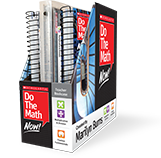Do the Math Intervention Program Tutorials Really Work?
Many math intervention programs have many benefits for students, but which ones are best? These tutorials can be a great way to supplement teacher-led classroom interventions and increase student understanding of concepts. Let’s look at four of the most effective ones. These sites begin with a diagnostic assessment to help you determine where students need help and which gaps need to be filled. After the assessment, you can monitor your students’ progress and add modeling tasks that teach problem-solving skills.
EasyCBM
The easyCBM math intervention program includes several online tools designed to help teachers and students manage their learning problems. Its resources include video tutorials, student practice tests, and diagnostic tools. EasyCBM’s resources are divided into two levels: lite and deluxe. The lite version is free, and lacks the full set of resources available in the deluxe version. Both versions are aimed at helping teachers and students learn about the program, as well as to measure learning improvement.
The easyCBM math intervention program tutorials can help teachers structure student writing and assign assignments based on the learning outcomes of each student. The software includes writing guides, resources, and assessments for grades K-8. Aside from providing online tutorials, EasyCBM also provides assessments for all subjects. Teachers can assess students’ progress using the CBM math probes. These resources are designed to help teachers and students navigate the COVID learning gap.
TransMath
If you’re a teacher looking to get your students the help they need in math, you may be wondering if you should try to use a math intervention program tutorial. The short answer is, yes. This type of math intervention program is free. These resources are specifically designed for educators to use in the classroom. They help teachers discover and address numeracy deficits in a systematic manner. The program includes teaching materials, interactive teacher resources, and assessment data.
While many sites provide free tutorials for a specific subject, you should be aware that many are not geared toward advanced students. Most offer only the basics. If you’re working with students who need Tier 1 intervention, you might want to consider MathHelp.com. This site has a wide range of printable materials and hands-on performance tasks sorted from novice to expert. These are also useful for differentiated instruction.
FocusMATH
Do the math intervention program tutorials really work? It really depends on which program you choose. While many of these online tools are great for Tier 1 intervention, some are limited to more advanced concepts. You can use MathHelp.com, for instance, if you are primarily looking for resources for Tier 2 intervention. The site has a variety of hands-on performance tasks that vary from novice to expert levels, making it easy to differentiate instruction.
Do The Math is a research-based math intervention program developed by Marilyn Burns and her team of master classroom teachers. It focuses on number and operations and builds a strong foundation in number sense and problem solving. Each module consists of thirty minute step-by-step lessons. The program is designed for students who are having difficulty with basic mathematical concepts. Do The Math tutorials are designed to help teachers provide targeted support for struggling students.
IXL
Teachers who use IXL math intervention program tutorials are seeing immediate results. Students are getting instant feedback and step-by-step explanations. In addition, the program’s continuous assessment allows teachers to track their students’ progress. Teachers can select specific math practice sets based on their students’ progress. The program also uses an algorithm to automatically generate new questions. Teachers can monitor their students’ progress and decide what type of math practice they should give to struggling students.
In addition, the IXL analytics reports are providing teachers with real-time insights about their students’ performance. They are alerted to problems students are having, pinpointing student trouble spots, and forming small-group instruction to meet the needs of individual students. This information makes differentiation easy. In addition, it shows that students are at a similar level, letting teachers identify which skills should be focused on. It is this data that helps teachers improve their classroom management.

